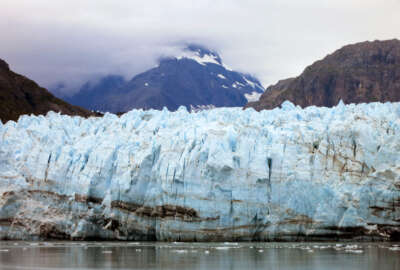
Military still fretting climate change despite Trump’s global actions
The military is writing new policies to protect building from sea level rise.
The Defense Department and the military services are doing their best to keep their heads above water.
That’s not a figurative statement. Just days after President Donald Trump announced the United States will leave a landmark global pact to fight climate change, military officials warned of the dangers and detailed the precautions the military takes regarding climate change.
That includes adjusting for potential sea level rise.
Military officials in charge of Defense Department and services installations told members of the Senate Appropriations Military Construction, Veterans Affairs and Related Agencies Subcommittee about the threats climate change poses to buildings and how the military is trying to mitigate those threats.
The Defense Department is revising its unified facilities code to adjust to climate change issues.
In addition, the Navy is writing into its policies and construction code that all new buildings take into account the possibility of sea level rise, said Deputy Chief of Naval Operations for Fleet Readiness and Logistics Vice. Adm. Dixon Smith during the June 6 hearing.
“We are taking sea level rise into consideration in our projects. We started this a few years ago as we realized it is changing. So now whenever we design any project that’s within the 100 year flood plain we look at it and analyze ‘Do we need to make adjustments to a standard project to accommodate for [sea level rise],’ said Smith said.
Dixon said the Navy’s fueling depot on Craney Island in Norfolk, Virginia was built 10 feet higher to account for climate change effects.
“Cyber buildings being built over at the Naval Academy, HVAC systems, utility systems are not going on the ground floor. They’re all safe from flooding. In that building we’ve designed flood barriers on the first floor,” Smith said.
The Air Force is also taking precautions after coastal zone flooding threatened Langley Air Force Base in Virginia and Eglin Air Force Base in Florida.
Air Force Deputy Chief of Staff for Logistics, Engineering and Force Protection Maj. Gen. Timothy Green said the Air Force is implementing similar policies to the Navy.
“Putting things above ground and elevating it is our primary approach,” Green said. “We are just being prudent in our design and construction efforts on what is ongoing.”
DoD is currently undergoing a strategic review that will inform the future of the department. That could change the way the Pentagon goes forward on climate change.
Still, DoD has a long history of preparing and considering climate change, especially with construction.
In 2014, the Army Corps of Engineers started rethinking how to build and maintain infrastructure that can withstand the extreme weather caused by climate change.
Lt. Gen. Thomas Bostick, the Corps’ commanding general, said in 2014 that the Corps was rethinking its entire planning process to protect communities from floods and droughts. Rather than thinking of its projects as one-off responses to extremely specific vulnerabilities, he said the agency needs to start thinking about watersheds as integrated systems, which in most cases contain numerous other projects managed by other state, local and federal agencies.
The Army Corps of Engineers is conducting several pilot programs with other agencies that attempt to treat entire watersheds as systems, and to manage them accordingly. It’s launched several other pilots that are trying to evaluate specific adaptations to climate change, including how agencies along the Ohio River in Cincinnati would respond to future droughts, and how changes in building technologies in Connecticut might alter how the Corps manages its hurricane protection projects there.
Last January the Pentagon required the DoD components to assess the effects of climate change on the department’s mission and to take into account those effects when developing plans and implementing them.
“The DoD must be able to adapt current and future operations to address the impacts of climate change in order to maintain an effective and efficient U.S. military,” the order stated.
The department also released a study on the risks of a changing climate.
“DoD recognizes the reality of climate change and the significant risk it poses to U.S. interests globally,” the study stated. It is “clear that climate change is an urgent and growing threat to our national security, contributing to increased natural disasters, refugee flows and conflicts over basic resources such as food and water. These impacts are already occurring, and the scope, scale and intensity of these impacts are projected to increase over time.”
The study outlines some measures the military was taking to prepare for climate change, such as creating a larger presence in the Arctic, where more land and sea are exposed as the polar ice caps melt.
Former military officials are also pushing DoD to take climate change seriously.
The Climate and Security Advisory Group released recommendations last fall calling on the president to “comprehensively address the security risks of climate change at all levels of national security planning.”
The group was made up of 43 U.S. based military and intelligence community experts.
Copyright © 2024 Federal News Network. All rights reserved. This website is not intended for users located within the European Economic Area.
Scott Maucione is a defense reporter for Federal News Network and reports on human capital, workforce and the Defense Department at-large.
Follow @smaucioneWFED



